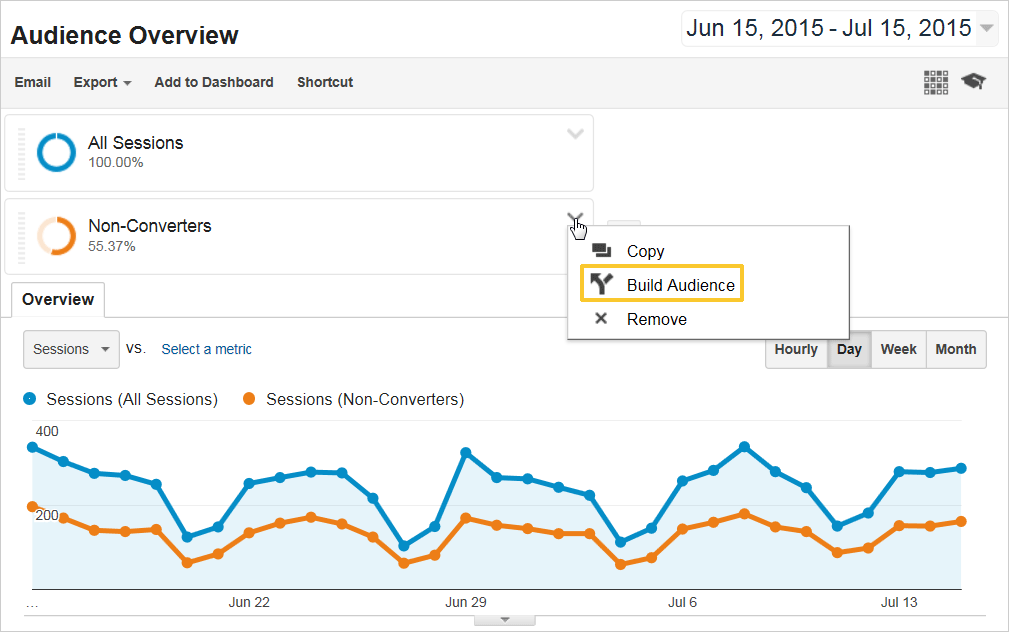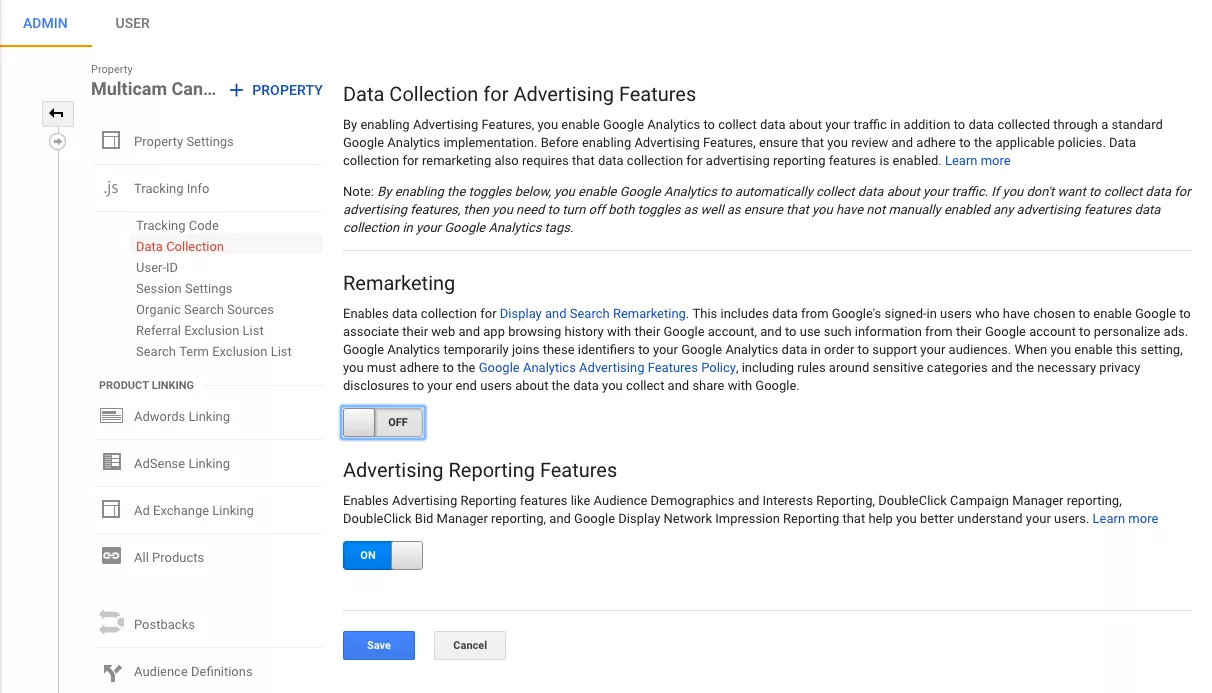Advanced Techniques for Remarketing In Google Analytics
Advanced Techniques for Remarketing In Google Analytics
Blog Article
Utilizing Remarketing in Google Analytics: A Comprehensive Overview
Using remarketing in Google Analytics uses businesses a calculated side in getting to out to potential clients. The capacity to target people that have already engaged with your internet site presents a distinct chance for customized advertising and marketing efforts. By understanding how to craft audience listings and release them properly, businesses can dramatically enhance their conversion rates. The details of establishing up and maximizing remarketing projects require a comprehensive understanding of audience segmentation and efficiency evaluation. This overview will certainly clarify the essential steps involved in utilizing the full potential of remarketing in Google Analytics, resulting in enhanced advertising and marketing results.
Understanding Remarketing in Google Analytics
Remarketing in Google Analytics permits services to tactically target individuals that have actually previously interacted with their internet site or mobile app. By leveraging information from Google Analytics, companies can create tailored remarketing listings based on individual behavior, such as web pages checked out, actions taken, or details goals achieved. This effective tool makes it possible for companies to re-engage with customers who have actually shown interest in their services or products, eventually increasing the chance of conversion.
Comprehending the various types of remarketing methods is essential for a successful project - What Is “Remarketing” In Google Analytics?. Google Analytics offers different options, consisting of basic remarketing, vibrant remarketing, and remarketing lists for search advertisements (RLSA) Each type serves an unique function and can be customized to meet certain marketing goals
Furthermore, evaluating the efficiency of remarketing projects is essential for optimizing results. Google Analytics offers useful understandings right into the effectiveness of different remarketing strategies, enabling organizations to make data-driven choices and improve their targeting approach. By continuously checking and readjusting remarketing initiatives based upon analytics information, organizations can take full advantage of ROI and drive success in their advertising and marketing efforts.
Establishing Remarketing Campaigns

After setting up audience checklists, the following action is to connect Google Analytics with Google Ads. By linking these 2 platforms, companies can seamlessly move target market lists from Google Analytics to Google Advertisements for remarketing objectives. This combination enables even more accurate targeting and better project performance.
As soon as the accounts are connected, services can create remarketing projects in Google Ads making use of the target market notes previously specified in Google Analytics. These campaigns can be tailored with specific advertisement creatives, messaging, and bidding methods to effectively re-engage with previous visitors and drive conversions. By following these steps, businesses can take advantage of the power of remarketing to improve their marketing efforts and raise ROI.
Using Target Market Segmentation Techniques

Predefined sections in Google Analytics enable you to quickly evaluate typical target market categories fresh individuals, returning customers, or users who completed a details goal discover this on your website. Custom-made sectors, on the various other hand, enable you to create special sectors based upon details criteria that are essential to your service purposes. Dynamic remarketing checklists instantly adjust based on user habits, showing individualized advertisements to customers that have actually connected with your website in certain ways.
Studying Remarketing Efficiency Metrics
Upon evaluating the effectiveness of remarketing campaigns in Google Analytics, the evaluation of vital efficiency metrics gives beneficial understandings right into audience interaction and conversion rates. By diving right into metrics such as click-through prices (CTR), conversion prices, price per purchase (CERTIFIED PUBLIC ACCOUNTANT), and return on ad spend (ROAS), marketing professionals can assess the success of their remarketing efforts. CTR indicates the percentage of customers that clicked on the ad after watching it, mirroring the advertisement's significance and appeal. Conversion prices determine the portion of users that finished a preferred action, such as buying, after clicking the advertisement. CPA discloses the ordinary expense incurred for each and every conversion, aiding evaluate project profitability. ROAS, on the various other hand, quantifies the income created for every single buck spent on advertising and marketing. Examining these metrics enables marketers to maximize campaigns, refine target market targeting, and allocate spending plans successfully to enhance general remarketing performance.
Optimizing Remarketing Techniques
When refining remarketing approaches in Google Analytics, concentrating on audience division is extremely important for achieving campaign success. By separating your target market into particular sections based upon their actions, demographics, or passions, you can tailor your ads better to each group. This targeted approach raises the possibility of engaging individuals that have actually currently revealed passion in your product and services, bring about greater conversion prices.
Another important facet Home Page of maximizing remarketing approaches is continuously testing and refining your campaigns (What Is “Remarketing” In Google Analytics?). A/B testing different ad creatives, messaging, or internet offers can help you recognize what resonates best with your audience and drives the most conversions. By analyzing the performance of these tests in Google Analytics, you can make data-driven decisions to maximize your remarketing initiatives better
In addition, leveraging vibrant remarketing can significantly enhance your project results. This attribute allows you to show tailored advertisements to customers based upon their previous interactions with your site, showcasing product and services they have formerly checked out. By providing tailored content to customers based upon their behaviors and passions, vibrant remarketing can help increase involvement and drive conversions.
Final Thought
In final thought, utilizing remarketing in Google Analytics is a tactical approach to target users that have formerly engaged with an internet site. By producing personalized audience checklists and making use of audience segmentation approaches, services can optimize remarketing projects for enhanced conversion prices. Assessing performance metrics and continuously enhancing techniques are crucial for taking full advantage of the effectiveness of remarketing initiatives.
Google Analytics uses various choices, consisting of conventional remarketing, vibrant remarketing, and remarketing listings for search advertisements (RLSA)After setting up target market checklists, the next action is to link Google Analytics with Google Ads. By connecting these two platforms, businesses can perfectly move target market lists from Google Analytics to Google Ads for remarketing functions.As soon as the accounts are linked, organizations can produce remarketing projects in Google Ads utilizing the target market lists previously specified in Google Analytics.When refining remarketing approaches in Google Analytics, focusing on audience division is extremely important for attaining campaign success.
Report this page